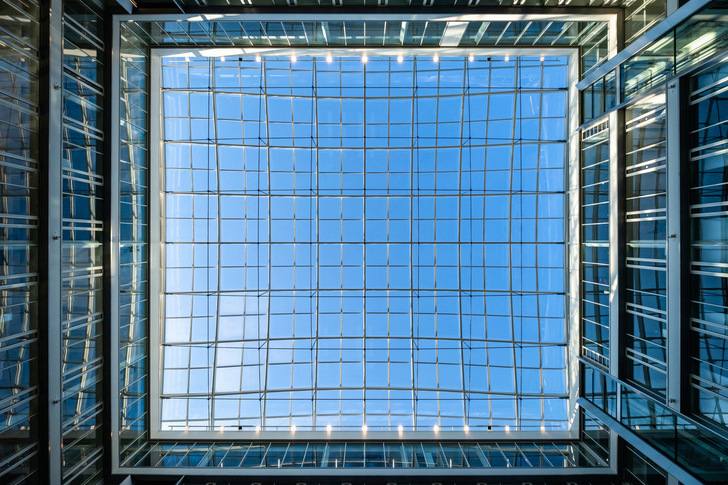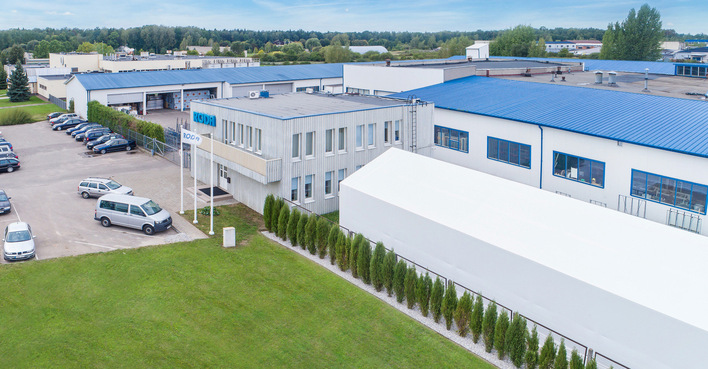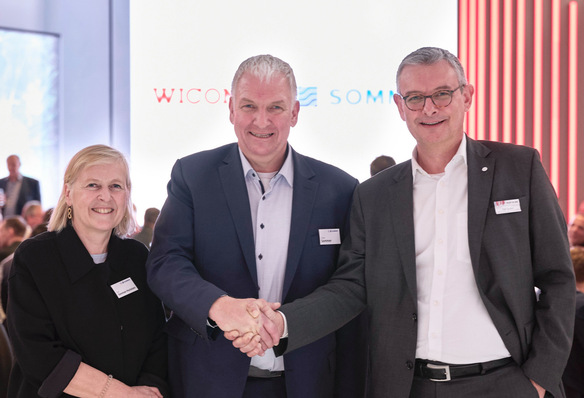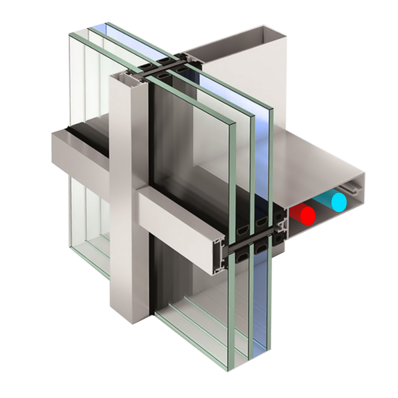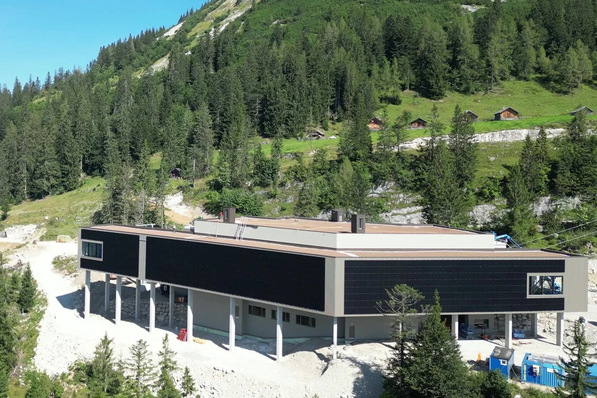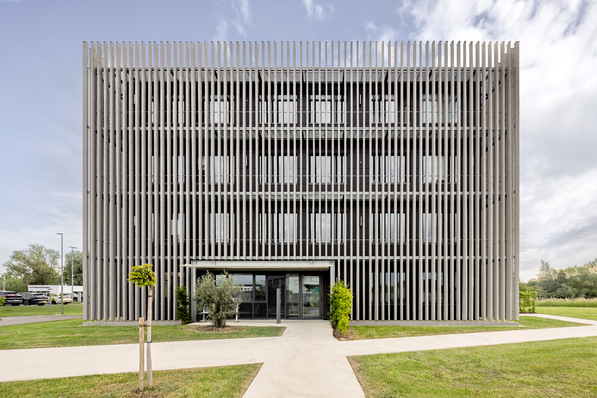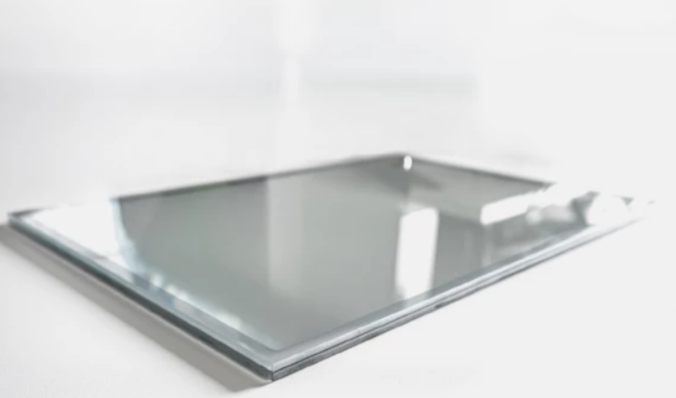"We have done a lot in the "Newton" building to use natural resources such as groundwater, sunlight and daylight. We have created a building that is built for people, that protects the environment and allows the client to create long-term value," explains Franz Meier, project-leading architect from DMP Architekten Munich.
Due to this unique building concept, the "Newton" received the Platinum Certificate for Sustainability from the German Sustainable Building Council (DGNB) and secured a top position among Munich office building projects. The Lamilux PR60 glass roof also pays into this account.
With a primary energy consumption of 70 kWh/a*m², the "Newton" building is one of the most economical office buildings in Munich. This is made possible by structural features such as triple glazing throughout the building, solar control glazing and external sun protection, as well as technical building equipment. Electricity is generated by photovoltaics, and groundwater is used for heating and cooling.
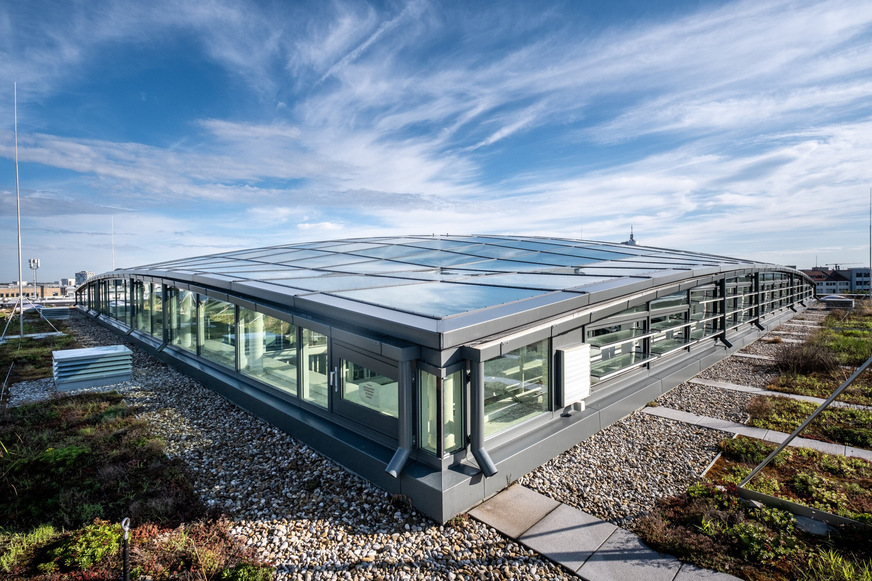
Lamilux
The Lamilux system allows a high level of daylight to enter, is energy-efficient and ensures a high level of safety on the roof. The EPDM outer seal and the special arrangement of the frame profiles ensure the unhindered drainage of rainwater before it can penetrate the structure. The sealing system specially developed for the inner sealing level ensures efficient ventilation of the rebate base and controlled water and condensate drainage.
See also: Warm edge for multi-curved glass roof in Melbourne
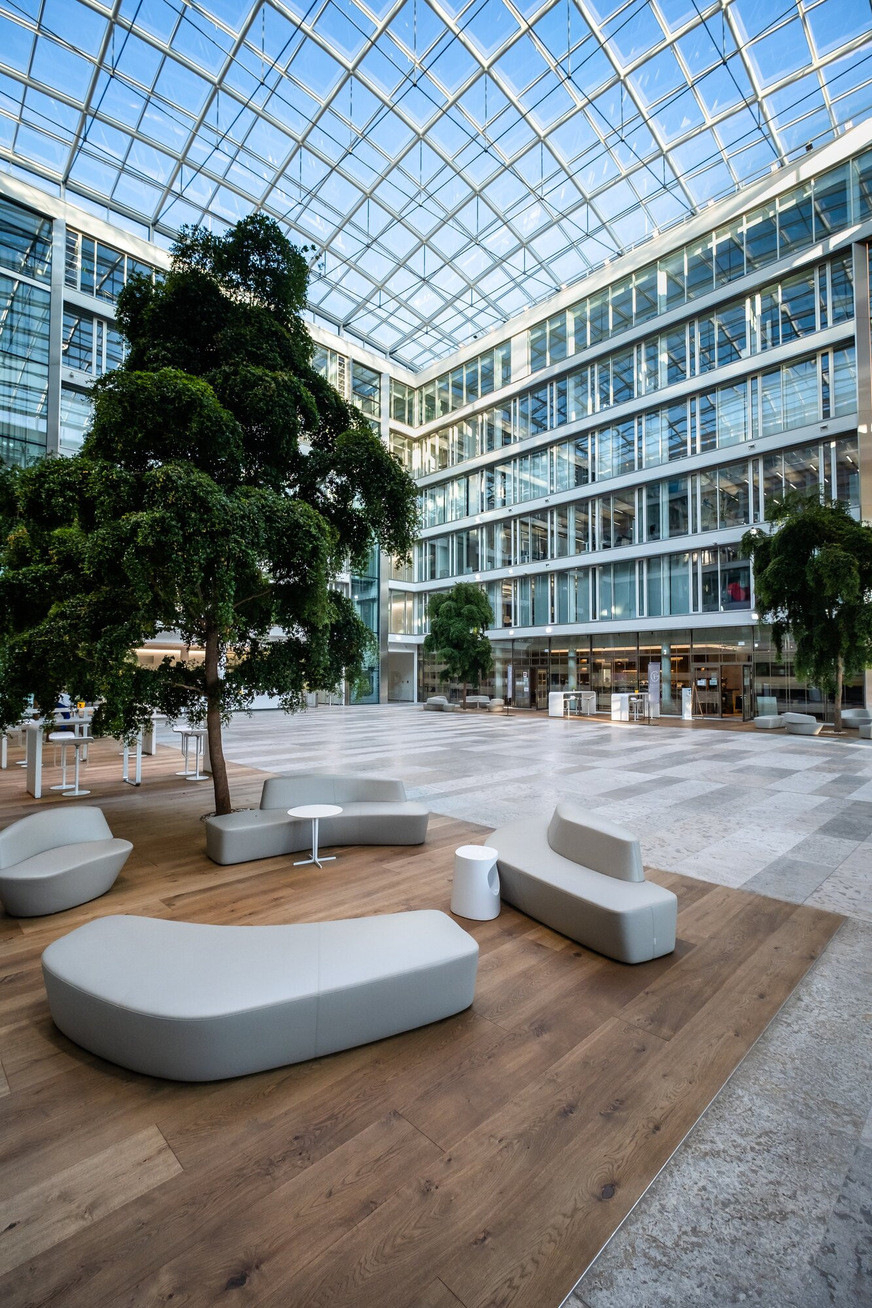
Lamilux
If water finds its way into the construction, the secondary drainage kicks in thanks to the impact-free and overlapping sealing system, which ensures the unhindered drainage of the water without destroying the glazing rebate. This avoids blind panes. In addition, the sealing system ensures optimal isothermal processes.
Since the entire construction is thermally separated, the glass roof becomes the active energy manager of the building: In summer, the heat stays outside; in winter, it stays inside. To achieve a particularly high longevity of the glazing, the rebate base must be ventilated in both the mullions and transoms. Lamilux achieves this with patented AVS technology, which ensures passive rebate base ventilation even in highly insulated systems.
Natural light and energy efficiency
Daylight in particular plays a major role in office complexes. It has been proven that it promotes the employees' ability to concentrate, mood and creativity. This is a fact that the architects DMP Architekten Munich took very seriously when designing and constructing the Newton building.
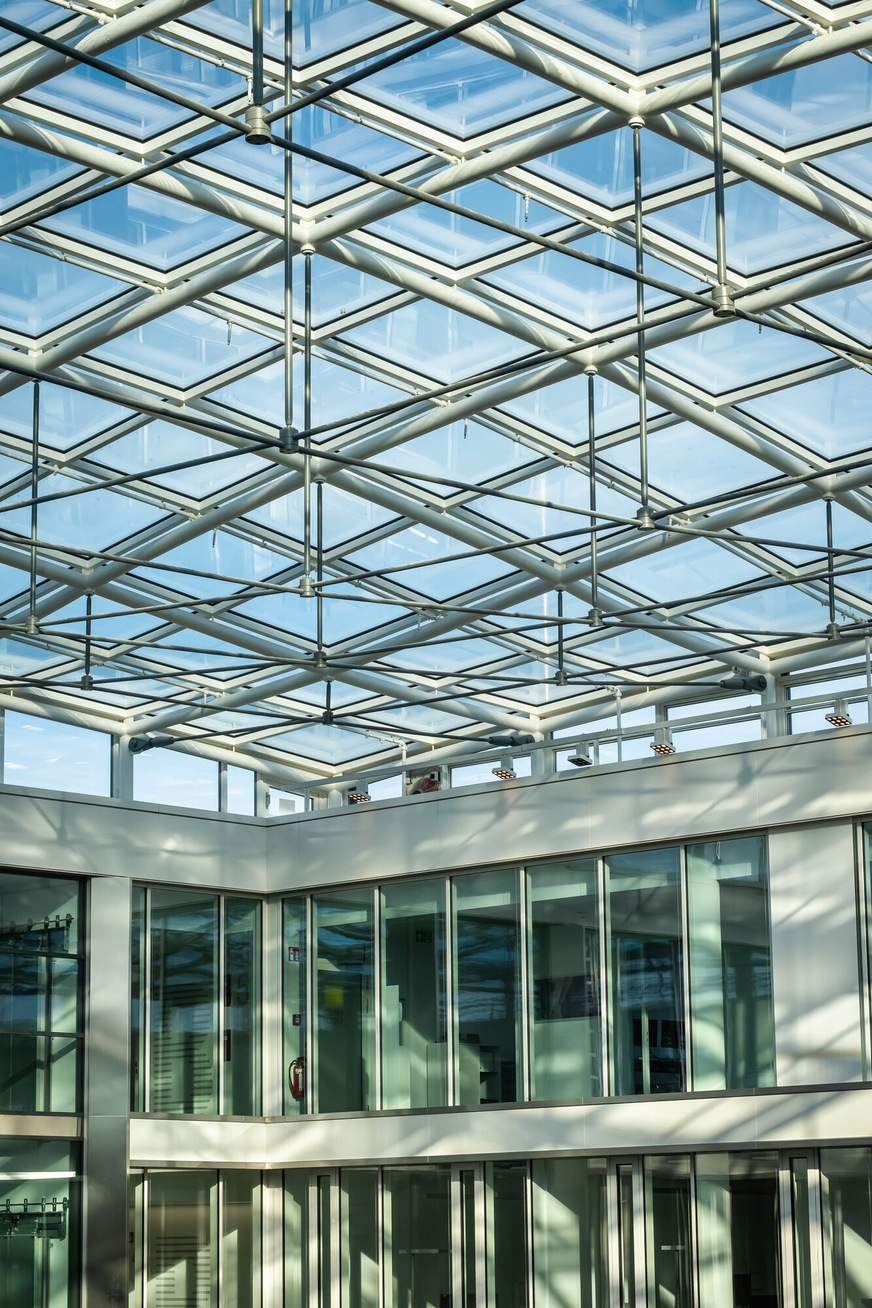
Lamilux
Architect Franz Meier says: "Natural daylight corresponds to the natural rhythm and the natural sensation of human beings. If we stick to it, we stick to the human scale. All efforts with artificial light always go in the direction of replacing or optimising natural light. If we have the opportunity to be able to use natural light, that is the most sustainable concept in all respects."
And it was precisely this concept that the planners implemented. Large window fronts on all sides flood the offices on the upper floors with natural light.
How the glass roof creates a unique atmosphere
A special highlight of the Newton, however, is definitely the glazed entrance hall: "We wanted to turn the outdoor space into an indoor space. The time of day and the season were to be experienced and felt and provide orientation. But the space should also be usable at all these times and in all these moods," says architect Meier.
The 950 m² glass roof by Lamilux from Rehau covers the entire hall and creates an exciting spatial effect inside the building. The high daylight incidence, energy efficiency and high safety on the roof are just some of the countless advantages that the Lamilux PR60 glass roof brings with it.
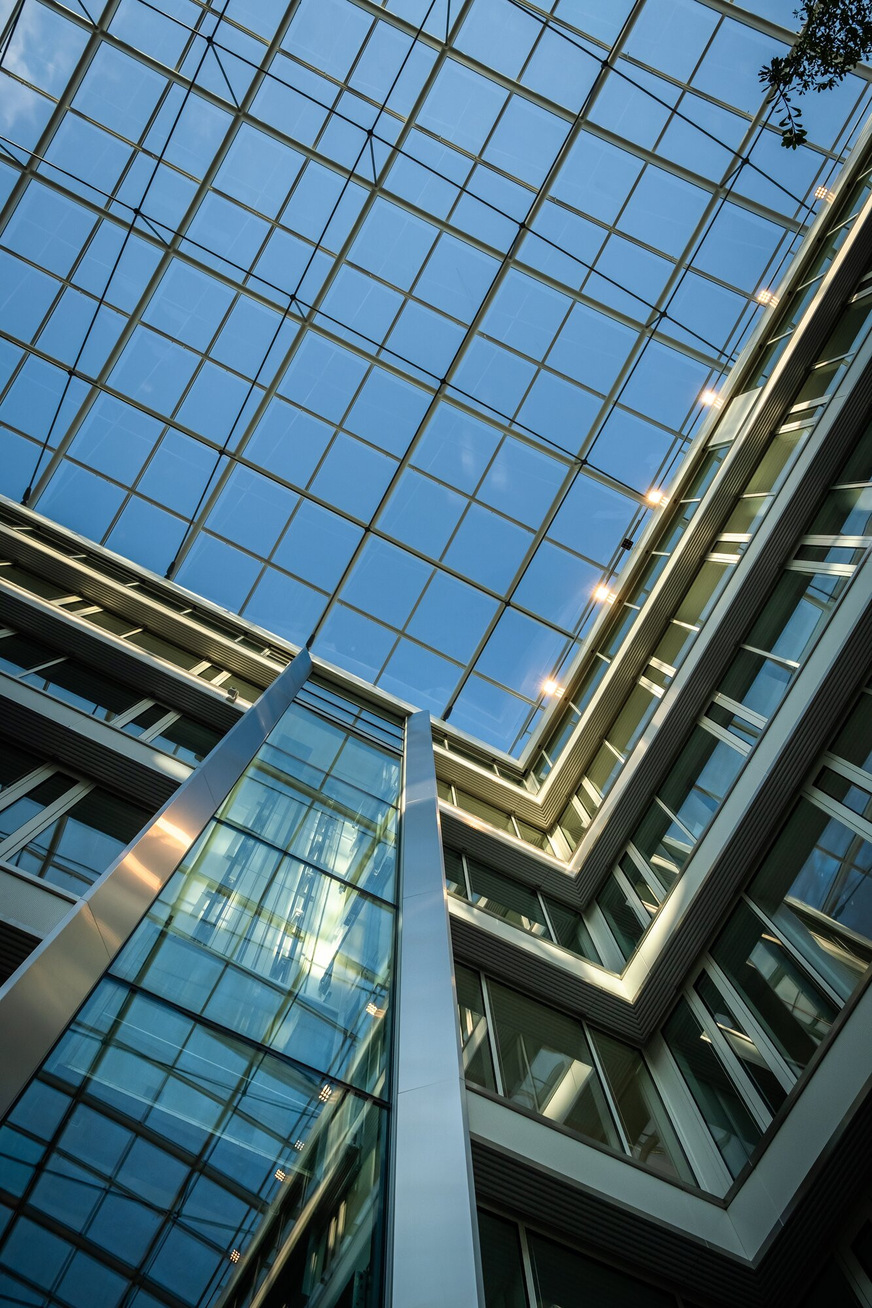
Lamilux
Also interesting: A glass roof for the motorway in Warsaw
"The special thing about this daylight construction, compared to other daylight systems, is the individual design and the freedom in the dimensions. In addition, the Lamilux PR60 glass roof is not bound to grid dimensions," explains Lutz Jennermann from Lamilux.
However, the 950 m² glass roof in the Newton building also presented the Lamilux employees with some challenges: "A curved roof with curved panes was something we had never seen before," Jennermann explains. And he continues: "Tests had to be completed both in our factory in Rehau and at the Institute for Window Technology (ift) in Rosenheim, as the panes had to be installed in a curved shape and 'bent' into shape. Tests for driving rain tightness and air permeability were also carried out. The resistance to wind load was also measured, as we did not yet have any proofs for this special geometry."
Perfectly coordinated assembly
Lutz Jennermann: "The assembly was quite challenging. Our production department could only produce individual parts, which were assembled on site in Munich. The complication here was that all the profiles were different. So the assembly was like a puzzle." The experts from Lamilux then implemented the assembly together with the team from Metallbau Dodel.
Lutz Jennermann continues: "For such a size - we are talking about approximately 31x31 m of daylight on an individual steel structure - the Lamilux PR60 glass roof is definitely unrivalled. This effect, this completely glazed entrance hall, is neither technically nor aesthetically feasible with arcade rooflights or skylight domes."
A building with a feel-good factor
Architect Franz Meier: "We wanted to create an office building that would become a place where people like to go, where they like to spend time. Through the glazed entrance hall with the trees and the public areas, we have succeeded well. It's just nice to see that people enjoy being in a building here because they just feel comfortable there."
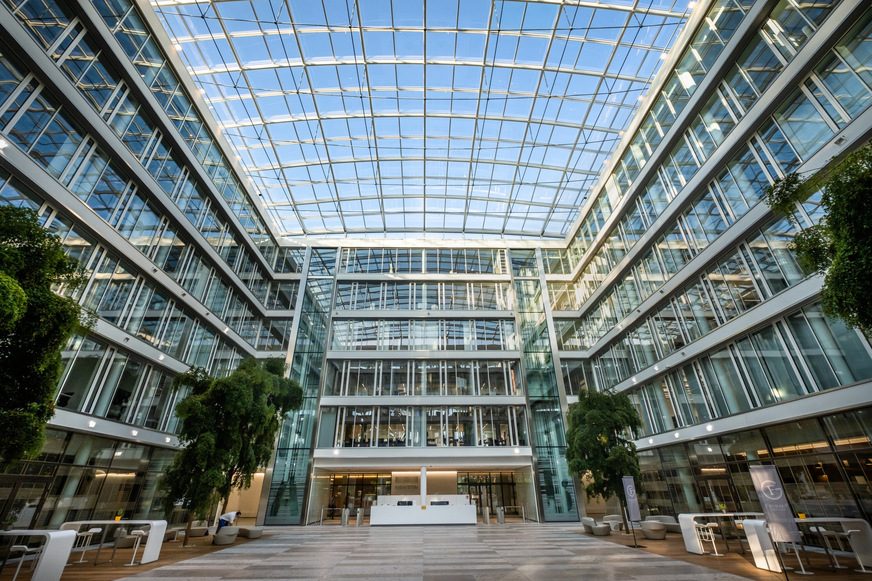
Lamilux







